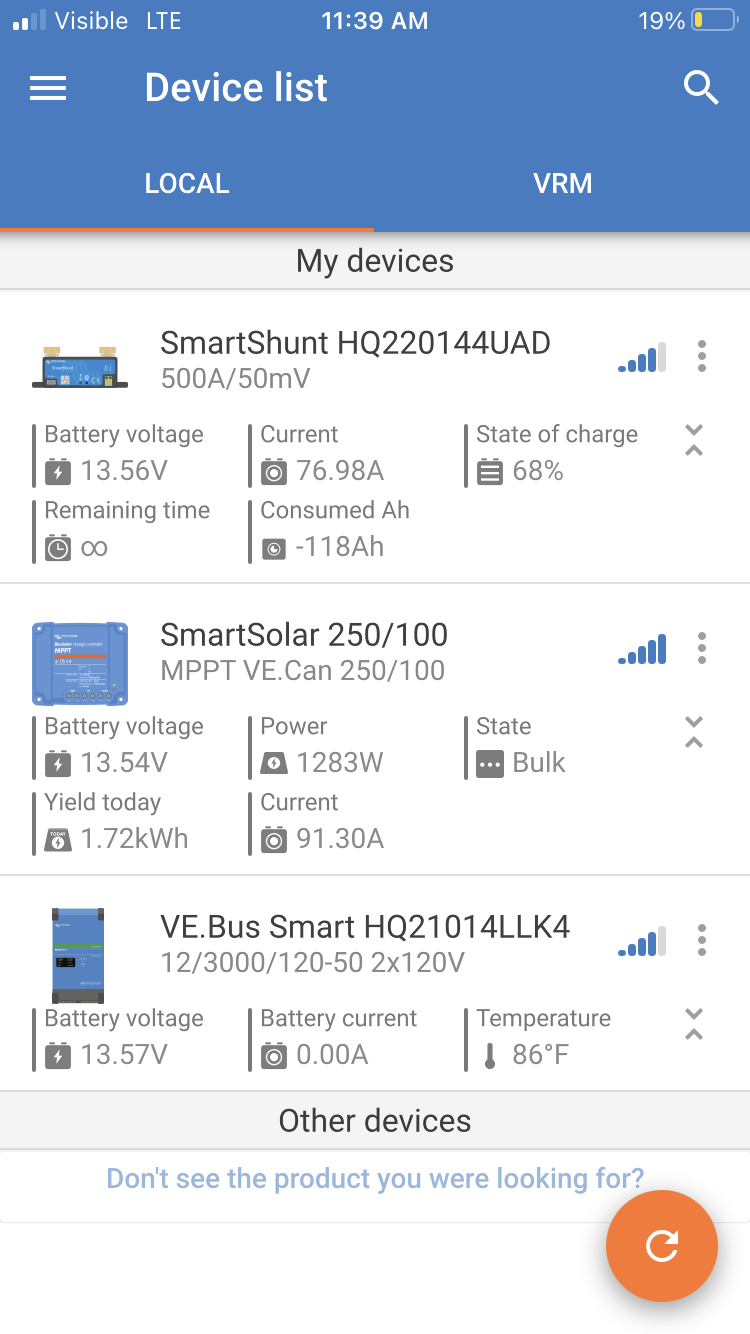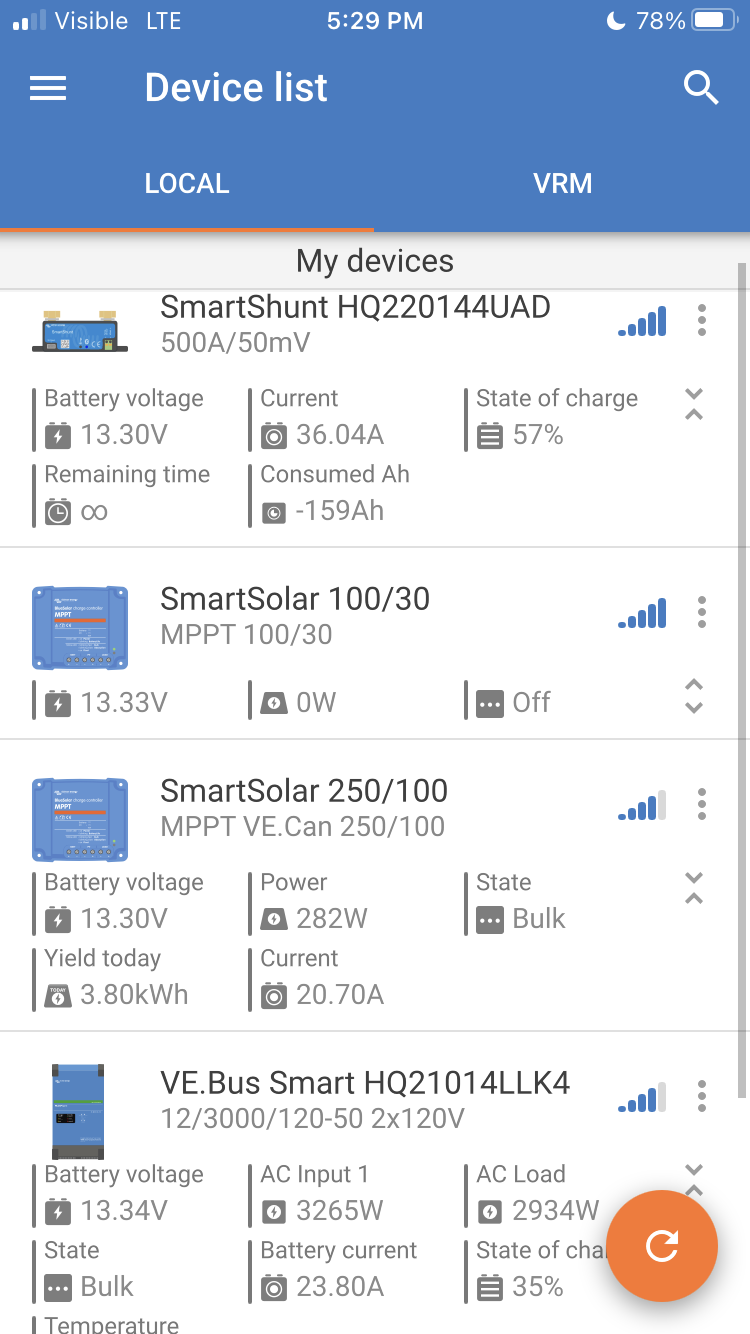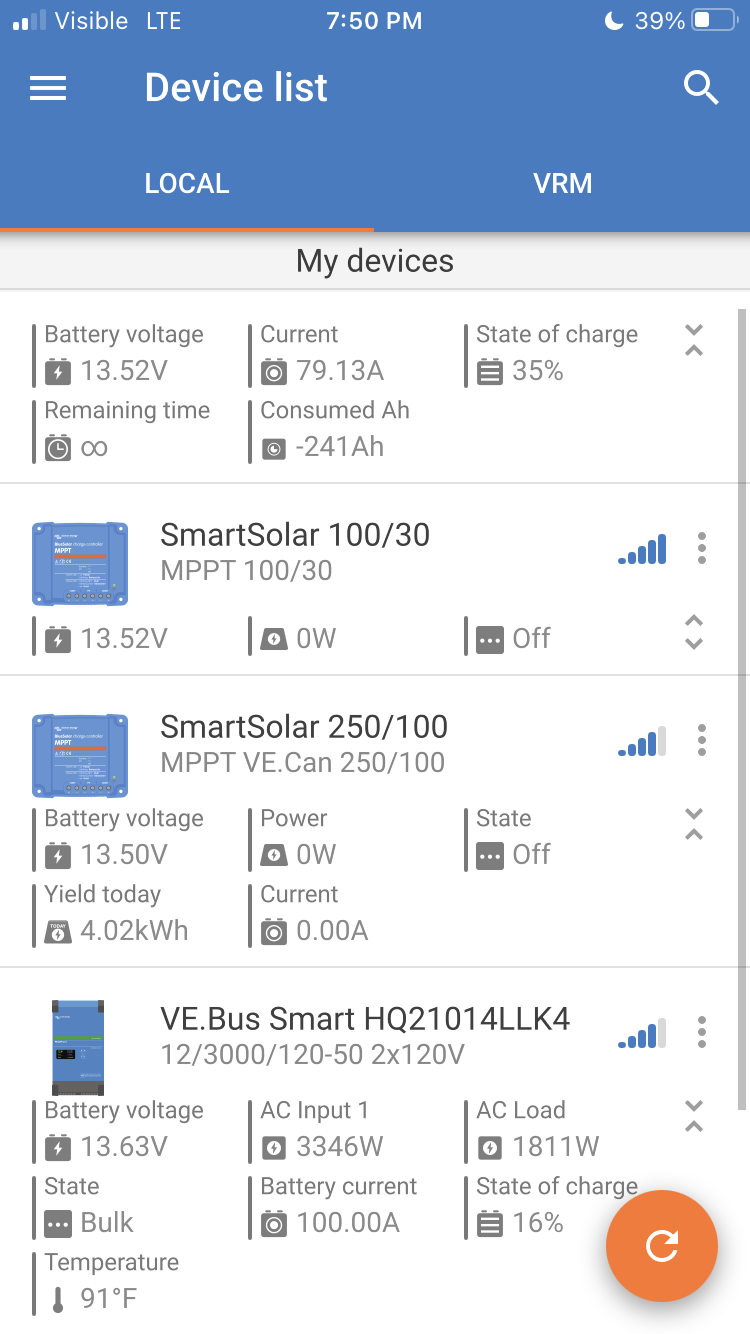Hi all,
Can you offer some insight into my battery current here. I’m probably just ignorant, but it would seem to me, if my MPII is reading -133.70 amps, and my MPPT is adding 75.00 amps, my Smart Shunt should be showing only -58.7 amps. But as the screenshot shows, it’s reading -87.87 amps (29 amps more draw on the batteries than there should be)
Again, I’m probably just not understanding the intricacies and being too simple about it. Any help is much appreciated.
EDIT
Could it be that there is ~29 amps of dc power drawing at the same time? That seems hard to believe with just led lights in an rv

 So I shut the mpii off and the numbers were still off. This time they were off by about 14.3 amps (see screenshot). This would make sense to me as I would expect about 10-15 amps of dc draw with my rv lights and other things on (which they are right now) - so if we zeroed out the discrepancy in this screenshot I think I’d be good.
So I shut the mpii off and the numbers were still off. This time they were off by about 14.3 amps (see screenshot). This would make sense to me as I would expect about 10-15 amps of dc draw with my rv lights and other things on (which they are right now) - so if we zeroed out the discrepancy in this screenshot I think I’d be good. @Seb71
@Seb71